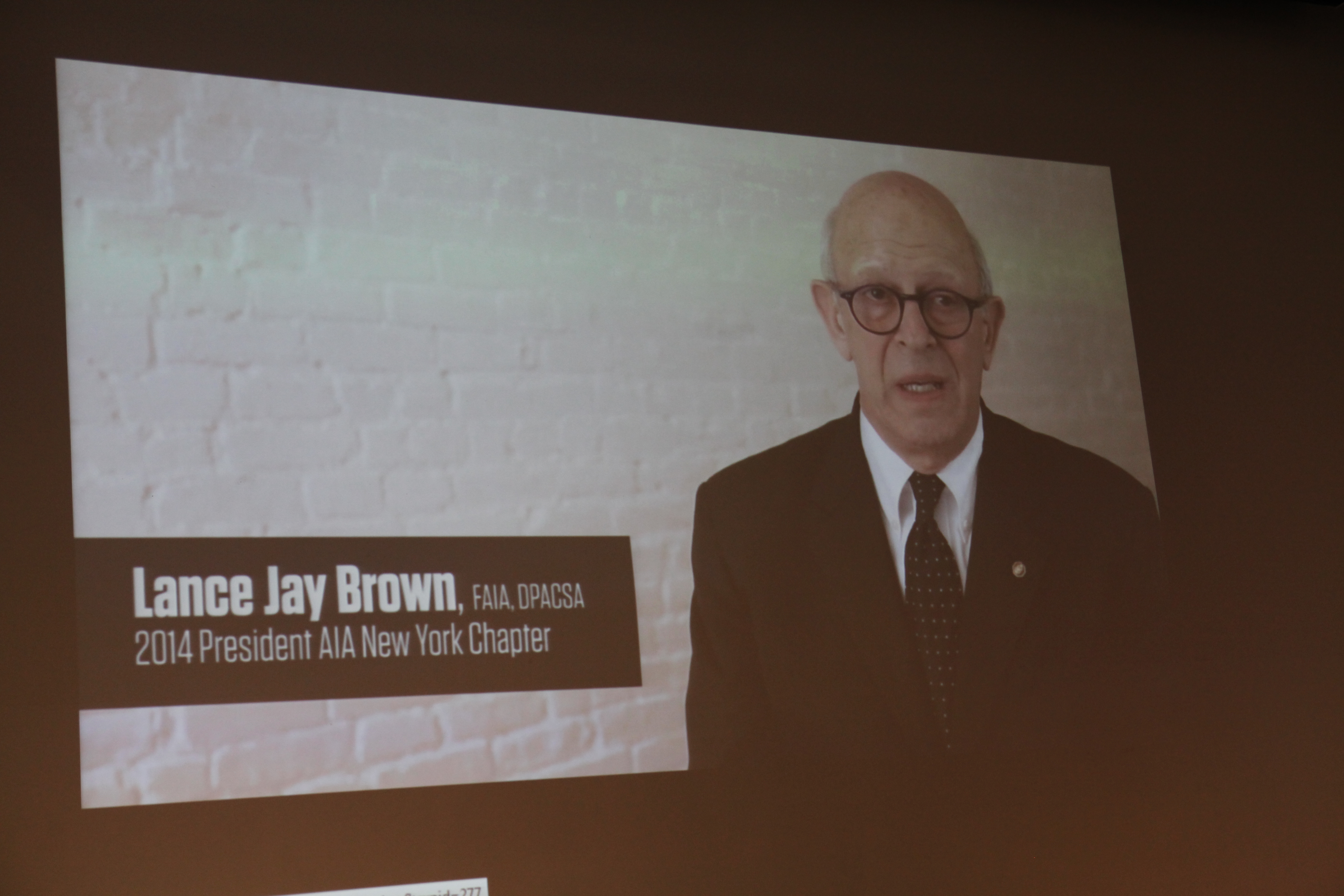by: ac
The June Oculus Book Talk was introduced by AIANY Executive Director Rick Bell, FAIA, who presented a short, well-produced film on the newly opened “Open to the Public: Civic Space Now” exhibition at the Center for Architecture. The film features AIANY 2014 President Lance Jay Brown, FAIA, speaking about the Center’s commitment to civic space, and served as an adept way to usher in Hillary Brown’s extensive research in and around civic space. Brown’s talk was entitled “Future Proofing,” which is an evocative tag line for her line of inquiry. What Brown sets up in her lecture as well as her book, Next Generation Infrastructure: Principles for Post-Industrial Public Works, are a series of projects and consequences that can be described as “solving for pattern,” an analysis technique coined by environmentalist Wendell Berry. The phrase gets to the core of Brown’s interests. She starts and ends her book with Minnesota’s 2007 I-35W bridge disaster, and begins her inquiry by quoting from the book Natural Capitalism: “you can actually make a system less efficient while making each of its parts more efficient…” This is the tragedy of the I-35 incident. Multiple municipalities were not acting as a whole to maintain the bridge. And this is the genesis of Brown’s research for examining infrastructure projects globally.
Next Generation Infrastructure: Principles for Post-Industrial Public Works is a journey through Brown’s lively and facile mind. She has cataloged and taxonomized many public works throughout the world that harness innovative, sustainable methods and practices. The book is, at first glance, a difficult read. It is packed with case study after case study and agency after agency that have designed or orchestrated these projects. If one digs in, however, you find Brown’s voice, which is passionate and clear-headed. The projects that she is attracted to are all heroic and revolutionary in method. As a visual person, I would have liked to see more images of the projects and, just to challenge Brown a bit, photographs that she herself took. This would establish how Brown thinks about these projects and show more dramatically what her densely-woven abstract system diagrams leave out. I am envisioning a format like Andrew Kimball’s Fatal Harvest photography book, and this current text would serve as the reader. This text is too important to leave alone. I feel it should be enlivened with any form and medium possible.
Her greatest achievement is introducing the reader to the term “colocation.” This easy concept of ganging infrastructure that could work together is at the core of the successful projects she describes. With this phrase Brown is authentic in her thinking. Too often she relies on a sustainable jargon – “closing the loop,” the “silo” separation, “exchange neutrality” – that is over-used in this course of research, and lost their meaning in so dense a text. The over-abundance of initialisms and acronyms were hard to follow (the editing here is lacking) and made her hard-won descriptions become confusing. But the term “colocation” illustrates a holistic, beautifully-designed approach. Its very name conjures up gardens and nature thruways existing next to a landfill, or a rain garden adjacent to roadbeds in Orleans Parish. This stacking of functions is best expressed in Taniguchi’s “museum of Garbage,” which includes a swimming pool and fitness center.
I applaud the very optimistic analysis of the financing that could produce these heroic schemes. Clear and concise, this part of the book illustrates a designed approach to the problem that mirrors the ethos of the rest of the projects. Brown’s explanation of the potential for local governments’ impact on these projects in an argument to take to the Republican House, and its explanation of the State Infrastructure Banks should be ferried over to Google and Facebook. She so easily gets to the root of the big issues in society by devoting a chapter on how to finance this large scale work. Again, clear-headed and optimistic.
Annie Coggan is a principal with Coggan and Crawford Architects, and teaches at the Fashion Institute of Technology and the School of Visual Arts in New York City.
Event: Next Generation Infrastructure
Location: Center for Architecture, 06.09.14
Speakers: Hillary Brown, FAIA, Principal, New Civic Works, and Professor, Spitzer School of Architecture, City College of New York; Byron Stigge, Founding Director, Level Agency for Infrastructure; and Rick Bell, FAIA, Executive Director, AIANY
Organizers: AIANY Oculus Committee












